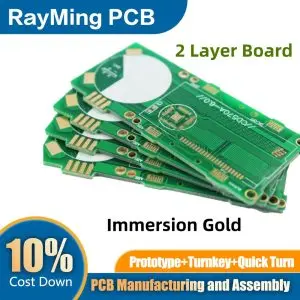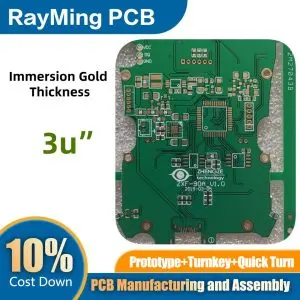The Immersion Gold process for 4-layer PCBs is a critical final step in the ENIG (Electroless Nickel Immersion Gold) surface finish. This process involves:
-
Preparation: After electroless nickel plating, the 4-layer PCB is thoroughly cleaned and activated.
-
Immersion: The board is immersed in a gold solution containing potassium gold cyanide.
-
Ion Exchange: Gold ions in the solution displace nickel atoms on the surface through a chemical reaction, not electrolysis.
-
Controlled Deposition: The process self-limits, typically depositing 0.05-0.1 µm of gold.
-
Rinsing and Drying: The PCB is carefully rinsed and dried to remove residual chemicals.
For 4-layer PCBs, this process offers several advantages:
- Uniform gold thickness across all layers, crucial for consistent performance
- Excellent surface planarity, vital for fine-pitch components on complex boards
- Enhanced protection against nickel oxidation, ensuring long-term solderability
- Compatibility with both tin-lead and lead-free soldering processes
The Immersion Gold process provides a thin, even gold layer that protects the underlying nickel while maintaining the intricate features of 4-layer PCB designs. This finish is particularly beneficial for high-frequency applications and boards requiring extended shelf life.





